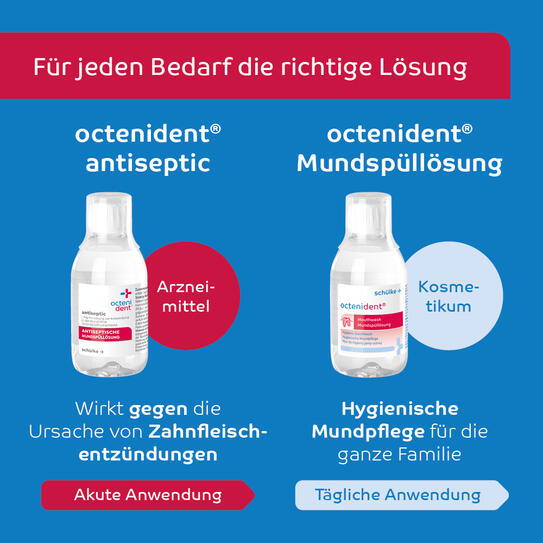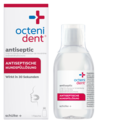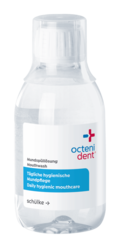
"Healthy starts in the mouth - for everyone!"
Under this motto, this year's Dental Health Day (1) focuses on vulnerable population groups - regardless of whether they are only able to take care of their (oral) health to a limited extent due to their physical and mental condition or a difficult socio-economic situation. The aim is to present support services, strengthen skills and highlight opportunities for health participation.
Good oral hygiene should not be a privilege. According to Dr. Christian Rath, Managing Director of the Association for Dental Hygiene (VfZ), Dental Health Day on 25 September provides a valuable opportunity to draw public attention to the importance of good oral hygiene and raise awareness of the importance of good dental health for everyone.2
Better use of preventive services and more health participation
With a view to this year's focus of Dental Health Day, the Federal Association of Dentists in the Public Health Service (BZÖG) has therefore formulated the following goals:
- Identify the causes of gaps in care,
- reach vulnerable people and their caregivers in their living environments and raise awareness of oral and general health,
- work together with dentists in private practice to create structures that enable these population groups to receive oral health care.
The GKV-Spitzenverband, for example, is focusing this year on people in need of care and people with disabilities. If they are covered by statutory health insurance and receive integration assistance, they would have access to additional services in the area of prophylaxis to prevent dental diseases as well as treatment services for periodontitis.
In turn, the public health service in Germany helps to lay the foundations for a healthy upbringing and good oral health from an early age by providing easily accessible preventive services such as regular dental check-ups, consultations and prophylaxis in daycare centers and schools.
schülke - Our contribution to oral hygiene
We at schülke also provide low-threshold access to better oral hygiene. These figures show just how important this is, and not just for vulnerable patient groups: According to the German Dental Association (BZÄK), almost 35 million people in Germany have periodontitis - mainly due to a lack of oral hygiene - of which around ten million people have a severe form. And the incidence increases with age: according to the fifth oral health study3, more than half of people aged 35 and over are affected, almost two thirds of those over 65 and as many as 90 percent of the very elderly.
octenident® antiseptic can make a valuable contribution to oral hygiene, for example:
- when oral hygiene skills in adults, e.g. brushing teeth, are only possible to a limited extent,
- before extensive surgical procedures, e.g. implantation or apicoectomy4,
- to temporarily inhibit plaque formation - the main cause of inflammatory gum disease (e.g. gingivitis) and tooth decay
- before dental treatment of patients with an increased risk of infection.
The approved drug is well tolerated, has low systemic absorption and can be used during pregnancy*. Further advantages include a fast onset of action in just 30 seconds, the solution is alcohol-free and the mint flavor improves patient compliance.
The octenident® mouthwash solution is suitable for daily oral care for the whole family (children aged 6 and over). It inhibits odor-causing germs in the mouth and ensures fresh breath. In addition, the mouth rinse does not discolor the teeth. Rinse the mouth for approx. 30 seconds 2-3 times a day as required. Eating and drinking is possible immediately after use.
*From the 4th month
Sources:
1 In addition to the BZÄK, BZÖG, GKV-Spitzenverband and VfZ, around 30 organizations from the healthcare and political sectors are members of the Dental Health Day campaign group. The aim is to sensitize the general public to oral health and to increase knowledge about dental and oral health among the population.
(#5105)tagderzahngesundheit.de
3 https://www.bzaek.de/ueber-uns/daten-und-zahlen/deutsche-mundgesundheitsstudie-dms.html
4 DAHZ Hygiene Guide 2022

Our products

octenident® antiseptic
Antiseptic mouthrinse effectively combats the root causes of gingivitis and periodontitis
Pflichttexte zu zugelassenen Arzneimitteln gem. § 4 HWG
octenident®antiseptic 1 mg/ml Lösung zur Anwendung in der Mundhöhle Wirkstoff: Octenidindihydrochlorid. Zusammensetzung: 1 ml Lösung enthält 1 mg Octenidindihydrochlorid. Sonstige Bestandteile: Glycerol 85% (E 422), Natrium-D-gluconat, Citronensäure, Natriummonohydrogenphosphat-Dihydrat (Ph.Eur.) (zur pH-Einstellung), Macrogolglycerolhydroxystearat (Ph. Eur.), Sucralose, gereinigtes Wasser, Minze-Kühl-Aroma (enthält Propylenglycol (E 1520)). Anwendungsgebiete:octenident antiseptic hat eine antimikrobielle Wirksamkeit. Es wird angewendet zur vorübergehenden Keimzahlreduktion in der Mundhöhle, zur vorübergehenden Hemmung der Plaque-Bildung und bei eingeschränkter Mundhygienefähigkeit (z.B. wenn kein Zähneputzen möglich ist) bei Erwachsenen. Gegenanzeigen: Allergie gegen den Wirkstoff oder einen der sonstigen Bestandteile. Nebenwirkungen:Sehr häufig: Vorübergehende Beeinträchtigung der Geschmacksempfindung, wie z.B. ein bitterer Nachgeschmack; Leichte, umkehrbare Zahnverfärbungen. Häufig: Taubheitsgefühl im Mund, Beläge im Mund oder der Zunge, Vorübergehende Verfärbung der Zunge, Empfindlichkeit der Zähne. Gelegentlich: Kopfschmerzen, Übelkeit, Kribbeln der Zunge, Erhöhter Speichelfluss. Stand 03/23
Zu Risiken und Nebenwirkungen lesen Sie die Packungsbeilage und fragen Sie Ihre Ärztin, Ihren Arzt oder in Ihrer Apotheke.
Schülke & Mayr GmbH, D-22840 Norderstedt, Tel. +49 40 52100-666, info@schuelke.com
Data protection notice
We use analysis methods (e.g. cookies) to measure how often our website is visited and how it is used. We also use cookies to link your page visits and website usage with your customer data stored in our CRM system in order to be able to address you individually, i.e. based on your interests and usage. We alsowe embed third-party content from other providers (e.g. videos). We have no influence on further data processing and any tracking by the third-party provider.In this context, we also use service providers in third countries outside the EU that may not guarantee an adequate level of data protection, which entails the following risks Access by authorities without informing the data subject, no data subject rights, no legal remedies, loss of control.By hiring us, you consent to the processes described above. You can revoke your consent with effect for the future. You can find more information in our privacy policy



















